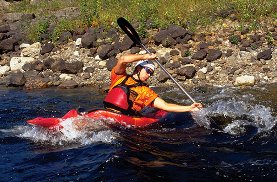Here in the Pacific Northwest outdoor activities are a way of life. From lumberjacks to the most experienced kayaker, healthy joints are important to perform various tasks and activities that involved upper body strength involving our shoulders.
The shoulder is the most mobile joint in the human body. To accomplish this, the shoulder requires a balance of stability and strength.
Shoulder Dislocation
Shoulder dislocation is a fairly common injury sustained by people of all age ranges. It is generally a sudden onset type of injury, which is caused by trauma to the shoulder region. There are many causes of this type of injury, from athletics to falling from a ladder. Most dislocations occur as the arm is outstretched to the side or overhead in conjunction with a force pushing the arm backward.
Dislocated shoulder signs and symptoms may include:
- A visibly deformed or out of place shoulder
- Swelling or discoloration (bruising)
- Intense pain
- Inability to move the joint
Shoulder dislocation may also cause numbness, weakness or tingling near the injury such as in your neck or down your arm. The muscles in your shoulder may be in spasm from the disruption, often increasing the intensity of your pain.
When the shoulder dislocates, the ligaments in the front of the shoulder tear causing pain and at least some loss of function in the affected arm. Although the ligaments may heal, the result is a shoulder that has even more laxity and instability than prior to the injury. Many athletes and active individuals will experience multiple occurrences of dislocation after the first event due to the increasingly unstable shoulder.
Successive dislocations, because of the increased amount of instability in the joint, often take significantly less force to occur. Whereas the first dislocation is usually the result of a traumatic force upon the shoulder, subsequent dislocations could result from ordinary, athletic or heavy use of the arm.
A common condition that may exist with shoulder dislocation is a SLAP tear, which is a tear to a structure in the shoulder known as the glenoid labrum. The labrum is a cartilage rim, similar to an O-ring, which covers the outside edge of the shoulder socket. This acts to deepen the socket and give the shoulder some extra stability. But under the extreme force of a shoulder dislocation, the labrum can be torn from the bone, creating a painful injury with reduced motion and strength of the arm.
Labral tears often produce a clicking or popping with shoulder motion, along with apprehension in the overhead ranges. Because these cartilaginous structures do not have a great blood supply, they often do not heal on their own and may require surgical intervention to re-attach the labrum to the bone.
Shoulder Dislocation Treatment
According to Dr. Shapiro, “A consistent strengthening program is often the key to shoulder stability.” There are many treatment options available for these types of shoulder injuries. Some are non-surgical such as physical therapy, while more extensive injuries may require surgical repair.
Dr. Joel Shapiro, MD, specializes in surgical and non-surgical treatment of shoulder injuries at Orthopedic Specialists of Seattle and uses the latest technologies and research studies to aid in the diagnostic process and treatment of your injury.
A good physical therapy program can help protect against instability. While this cannot help everyone, a diligent therapy program is always the first step. After evaluating your shoulder, a customized therapy program will be created.
If you believe you are suffering from a shoulder injury, Orthopedic Specialists of Seattle is here to help.

